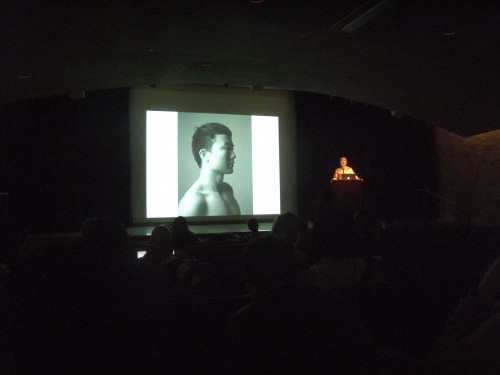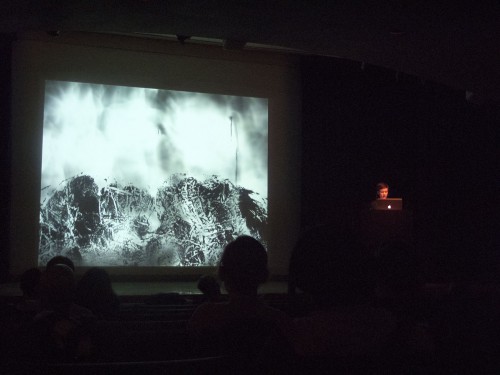Field Trip to SAIC Thesis Presentations
A couple of the other grads and myself went to the thesis presentations at the School of the Art Institute of Chicago. SAIC does their presentations somewhat differently than Columbia does. I am thinking about my final review for the semester, which will be happening next week.
At SAIC, they give a presentation of their work. This is a more formal presentation of their work. It is done in an auditorium with an audience and a projector. The students present for 45 minutes with the audience being able to ask questions for 15 minutes afterward.
At Columbia, we do not do these type of presentations. Instead, we put prints on the wall. We each get one room to hang our work in. Then, three of the faculty come in and we (the students) have a dialog with those faculty for 45 minutes. We do this at the end of every semester. Our candidacy process is similar to this (however, much more important, and the equivalency of what the SAIC students were doing today), and that happens the first semester of our second year. I still have a while before I need to worry about that.
While I feel that it is beneficial to have practice with giving a formal presentation like the students at SAIC gave today, I think the way that Columbia does their presentations is more beneficial to me at this point. I have given a number of formal presentations about work that I have made in the past. But for work that is very much still in progress (and it still will be next year when I present for Candidacy) I find that a formal presentation is not really as beneficial as having a dialog about the direction the work is heading. I think the main problem with a presentation style that is so formal is that in order for that presentation to be coherent, the work needs to be finished or close to being resolved. Without that, there is nothing to really structure a Power Point around.
That being said, it was nice to sit back and listen to other students that are in a different type of program, but still undergoing the same process as ourselves, talk about how and why they are making work.


